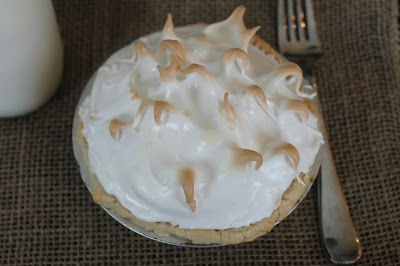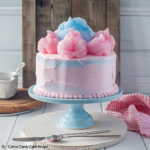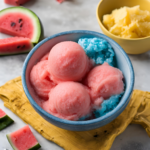Transport yourself to a sunny afternoon with the delightful aroma of freshly baked lemon meringue pie wafting through the air. This iconic dessert, with its tangy lemon filling and fluffy meringue topping, is a classic favorite that never fails to impress. Whether you’re a seasoned baker or a novice in the kitchen, mastering this recipe will make you the star of any gathering.
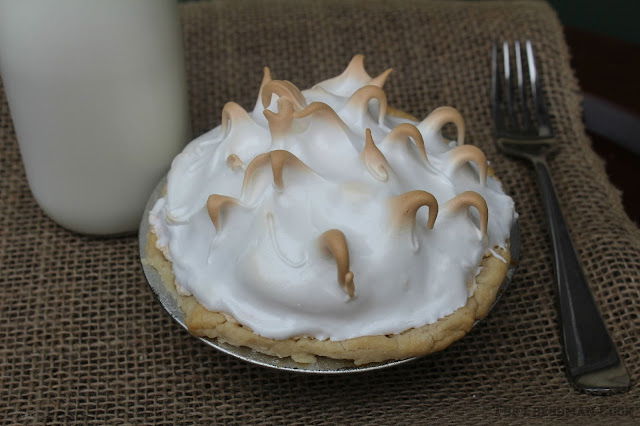
Lemon Meringue Pie
Equipment
- 9” pie plate
- Pie weights
- Saucepan non-reactive material
- Mixing bowls
- Instant Read Thermometer
- Fine Mesh Strainer
- Stand Mixer
Ingredients
- 1 1/4 cups Flour
- 1/4 teaspoon Salt
- 1/3 cup Shortening
- 4-5 tablespoons Cold Water
- 3 Eggs
- 1 1/2 cups Sugar
- 3 tablespoons Flour
- 3 tablespoons Cornstarch
- 1 1/2 cups Water
- 2 tablespoons Butter
- 1-2 teaspoons Finely Shredded lemon Peel
- 1/3 cup Lemon Juice
- 3 Egg Whites
- 1/2 teaspoon Vanilla
- 1/4 teaspoon Cream of Tartar
- 6 tablespoons Sugar
Instructions
- Preheat oven to 450 degrees.
- Used a Food Processor to Make Dough. Add flour, salt and shortening to the processor. Put the lid on and pulse the ingredients several times until the mix looks like cornmeal. Leave the processor on and start adding the water. After it is all added, turn the processor off, and scrape the sides. Pulse 2 more times. Take the dough out and form into a ball.

- Roll the dough into a flat circle 2″ wider than the dish you plan to bake the pie in. Used a 5″ mini pie pan, then rolled mine out to 7″ diameter.

- Place the dough on to your pie plate, then trim any excess dough. leave enough that you can fold the dough under to form a pretty edge. Use a fork to mark the edges of the pie.
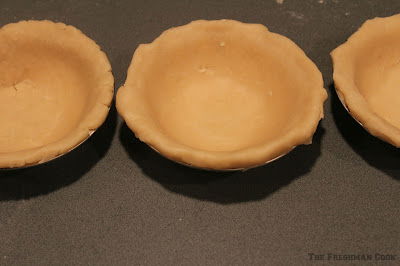
- Before baking your pies, fold over a piece of foil and place it on the pie crust. Pour some beans, any kind, on to the foil. This will allow the crust to bake but will not allow the crust on the bottom to rise.
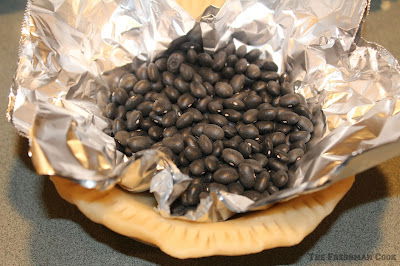
- Bake for 7-8 minutes. Remove beans and foil. The beans are reusable for more crust baking, so they can be saved if you would like. Return the crusts to the oven for 5-6 minutes. Cool completely.
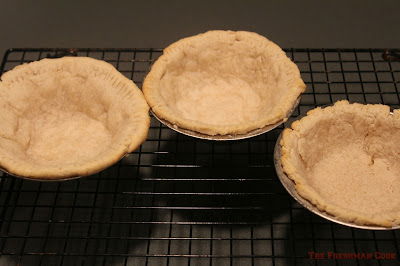
- Separate the eggs from the whites. Plan to use the whites for the meringue. Leave them out at room temperature. Combine the sugar, flour, cornstarch and salt. Stir in the water gradually. Cook, over medium high heat, stirring constantly until it becomes thick and bubbly. Reduce the heat. Cook and stir for 2 minutes. Remove from heat.
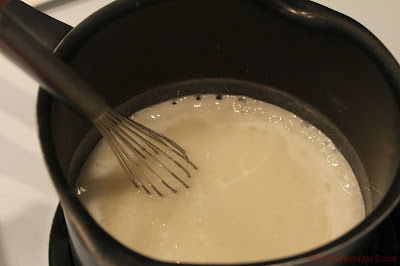
- Beat your egg yolks with a fork. Add 1 cup of the hot filling into the eggs and stir constantly. You do not want these to start to cook. If they do, you can remove some of the cooked pieces if there aren’t too many. Pour the rest of the egg yolk mix into the hot filling in the pan. Bring to a gentle boil. Cook and stir for 2 minutes. Remove from heat.
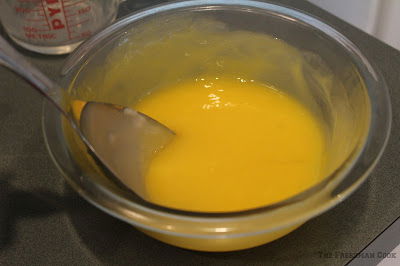
- Softly mix in the lemon peel, butter, and lemon juice. Keep the filling warm while you make the meringue.
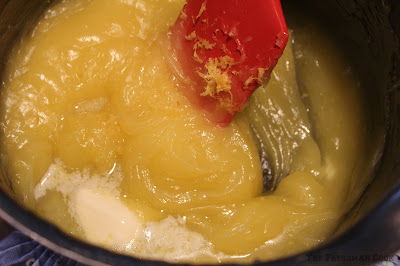
- Use the egg whites that you set aside when you were making the filling, and place them in a bowl with the vanilla, and cream of tartar. Beat on medium for 1 minute or until you get soft peaks, which means that the tips of the meringue curl. Gradually add the sugar, a little at a time, and beat on high speed for 4 minutes until the peaks become stiff and shiny.

- While your meringue is whipping (it won’t take long), quickly pour the lemon filling in to each crust.
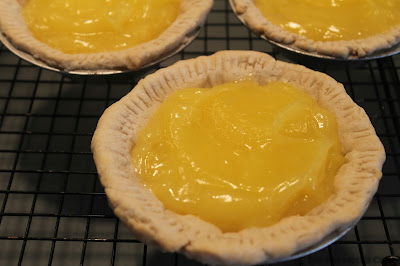
- Start adding the meringue to your pie. Make sure you bring the meringue to the edge of the pastry. Add more than is shown in this picture.
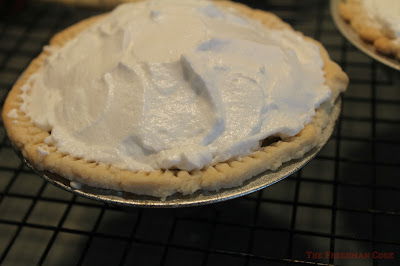
- With the back of a spoon, pull the meringue up straight to form these fun peaks. Place the pies in the oven and bake for 8-10 minutes. You can go longer if you want. Bake it until you get the color you are looking for. Cool for 1 hour and refrigerate for 3-6 hours.
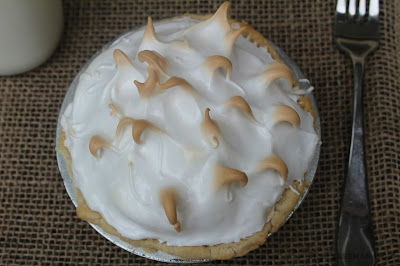
- After that, Serve and Enjoy Your Lemon Meringue Pie Dessert!
Notes
- Use a kitchen torch to give the meringue color. To make the meringue look and taste more like a toasted marshmallow, torch the top of it instead of baking it. The beautiful wavy pattern will also be shown off by torching the meringue.
- Be careful as you separate the eggs. While making meringue, you need only egg whites, not the yolk. Use a small bowl to carefully separate the eggs one at a time. When you separate the egg yolks, if any break, set those yolks and whites away for another use. Even a small amount of yolk can stop the meringue from rising and spreading.
- Cover the whole pie with meringue, all the way to the ends. There should be a layer of fluffy meringue on top of the lemon curd filling that touches the pie shell. This will help the meringue stick to the pie’s surface and make it less likely that it will leak if the pie is stored.
- Use a hot knife to cut the pie. A hot knife is the best way to cut the meringue into thin slices. Quickly put your knife blade in a glass of hot water to warm it up. Wipe the blade clean with care, and then put it back in the water to warm it up again.
Nutrition Facts
| Nutrition | Value |
|---|---|
| Calories | 374kcal |
| Carbohydrates | 59g |
| Protein | 6g |
| Fat | 14g |
| Cholesterol | 6mg |
| Sodium | 350mg |
| Iron | 1mg |
| Calcium | 28mg |
| Vitamin A | 325IU |
| Potassium | 137mg |
How to Make Meringue Thicker?
To make the meringue thicker, ensure the egg whites are at room temperature before whipping, and add cream of tartar or a small amount of cornstarch to stabilize the mixture. Whisk the egg whites gradually, adding sugar slowly to create a stable, glossy meringue with a thick consistency. Avoid overwhipping, as this can cause the meringue to become dry and lose its volume.

Why Is Vinegar Added to Meringue?
Acid. An acid will greatly improve the structure of meringue. It could be vinegar, lemon juice, cream of tartar, or a mix of these. Aside from making meringue rise and air bubble faster, the acid also keeps it solid. Meringue is more likely to fall apart during or after mixing if it doesn’t have acid.

